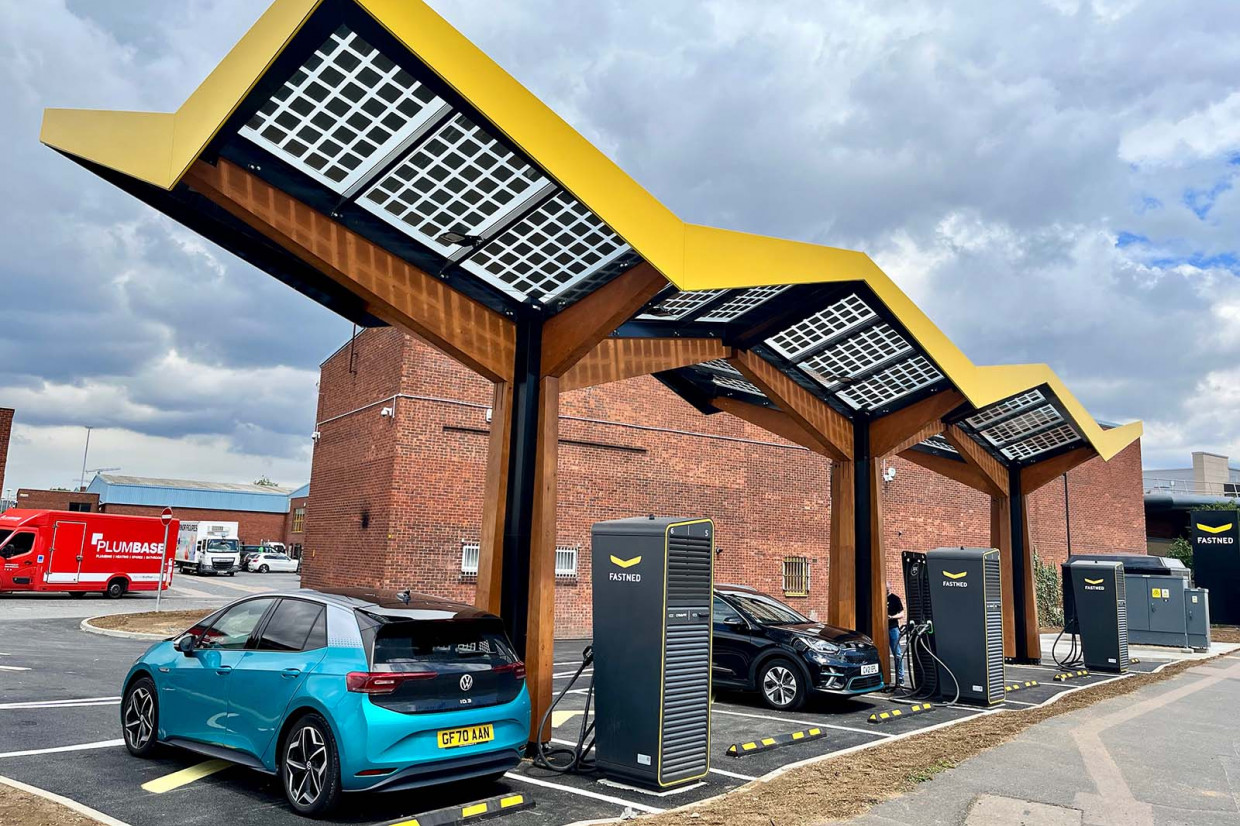
Electric car chargepoint operator Fastned has called for government action to get the pace of grid connections speeded up in order to meet the demand from rising sales.
Highlighting delays that were precluding his firm opening three sites, Tom Hurst, Fastned UK country manager, said: “Today, we’ve got three sites ready to open bar their grid connection; that’s frustrating. We’re doing a dance with the lawyers who are doing a dance with the grid operators - it can make you bang your head against the wall it’s so ludicrous.
“The operators are used to working with large building projects like housing estates, which take years to complete and are happy to have the big grid connections at pretty much any point during that build time; our needs are more immediate, and we have to find a way to speed up the process and remove some of the red tape that has built up as a result of working to the same goals for so long.”
The UK’s energy minister, Graham Stuart MP, recently admitted that speeding up grid connections is “possibly it’s the biggest challenge facing the [Energy Security and Net Zero] department”.
Subscribe to the Move Electric newsletter
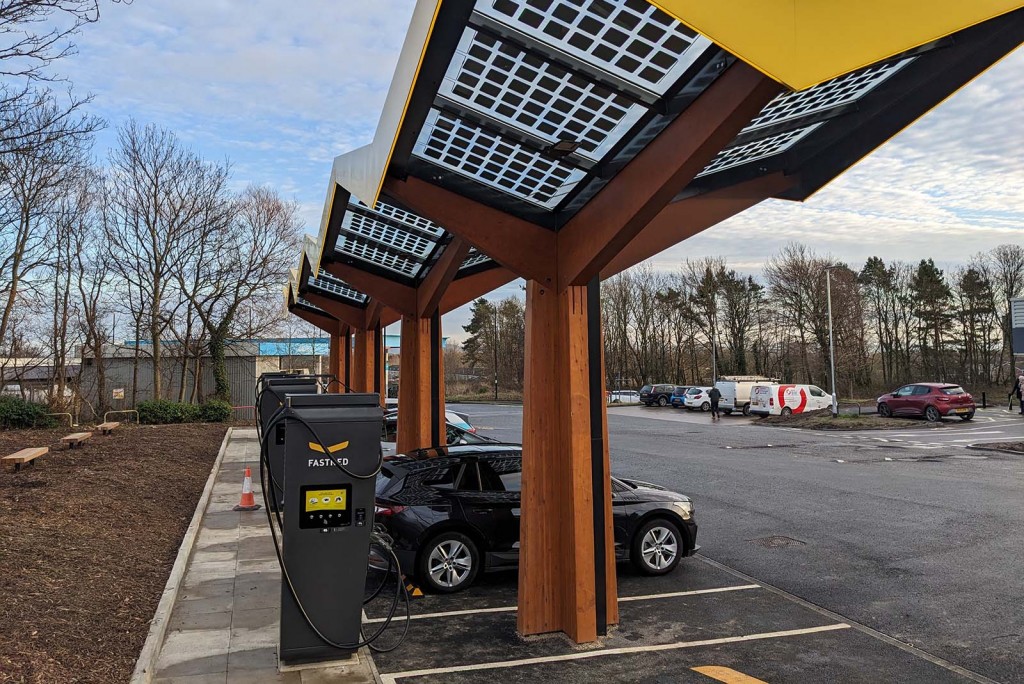
Hurst also called on car manufacturers to work more collaboratively with charge point operators to help build a sustainable business model for both sides. “If we want to build long-term businesses we need collaboration; manufacturers need to sell these cars, we need to charge them, so we need to work together,” he said.
“To an extent I do feel we’re hard done by. But people have to understand the machinations of approvals take time. We are gagging to install more chargers, we have sites that are ready to go the moment the connections are approved, but we can’t move faster than the regulatory processes.”
Below, Hurst outlines more on Fastned’s success to date, plans for the future and why it will never stop innovating its charge point designs.
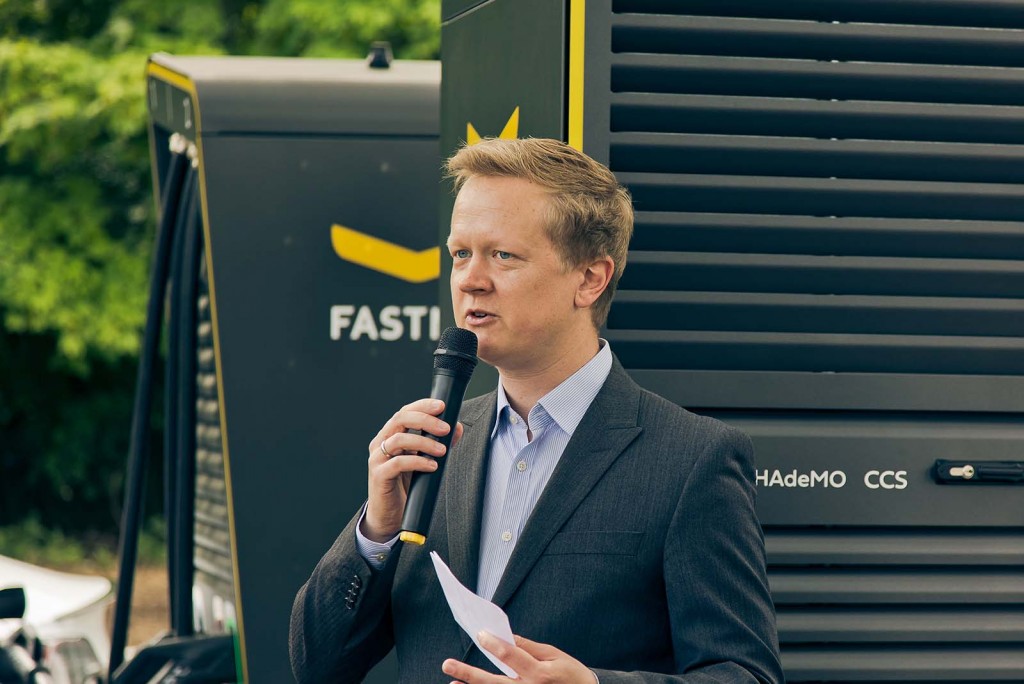
What’s Fastned’s history?
“We’re 11 years old now. We started in the Netherlands with the vision of providing freedom for electric drivers, and doing all we can to accelerate the change to sustainable mobility.
“At the time probably the only EV on sale was the Nissan Leaf, maybe the Renault Zoe, with a real range of about 70 miles. But we knew what was coming, and we knew that to give EV drivers the freedom they needed it was going to be necessary to build high-capacity fast charging stations in busy locations.
“We now have 251 locations across Europe, including 14 in the UK, and we’re up to our seventh iteration of charging layout now, always with the drive-through approach and always with the solar canopy. The canopy is practical, visible and familiar; if you’ve used one of our sites before, there’s no hunting around trying to work out how everything works when you go to another one.
“Our mantra is to provide a safe, convenient and stress-free experience. We want people to recognise our chargers, associate them with reliability, fast charging and comfort. We’re there to get you back on the road again quickly.”
Greenwich fast-charging time: Fastned opens new 300kW hub
What are your ambitions?
“The mission is to have 1000 locations across Europe by 2030, and of course the UK is a key part of that even if it's no longer in the European Union. We’ve been in the UK since 2018, with our first site - the first ultra-rapid charging hub in the UK - opening in 2019.
“Opening 1000 locations by 2030 is ambitious but realistic. And even if the oil giants suddenly pour their resources into massive growth, that’s fine: we’re here to hold them to account, to show what can be done and how it can be done, and to set standards that need to be matched. We’ve been doing it for 11 years and we live or die by the consumer experience we offer - and, in turn, we hope to keep pushing the whole industry to do more.”
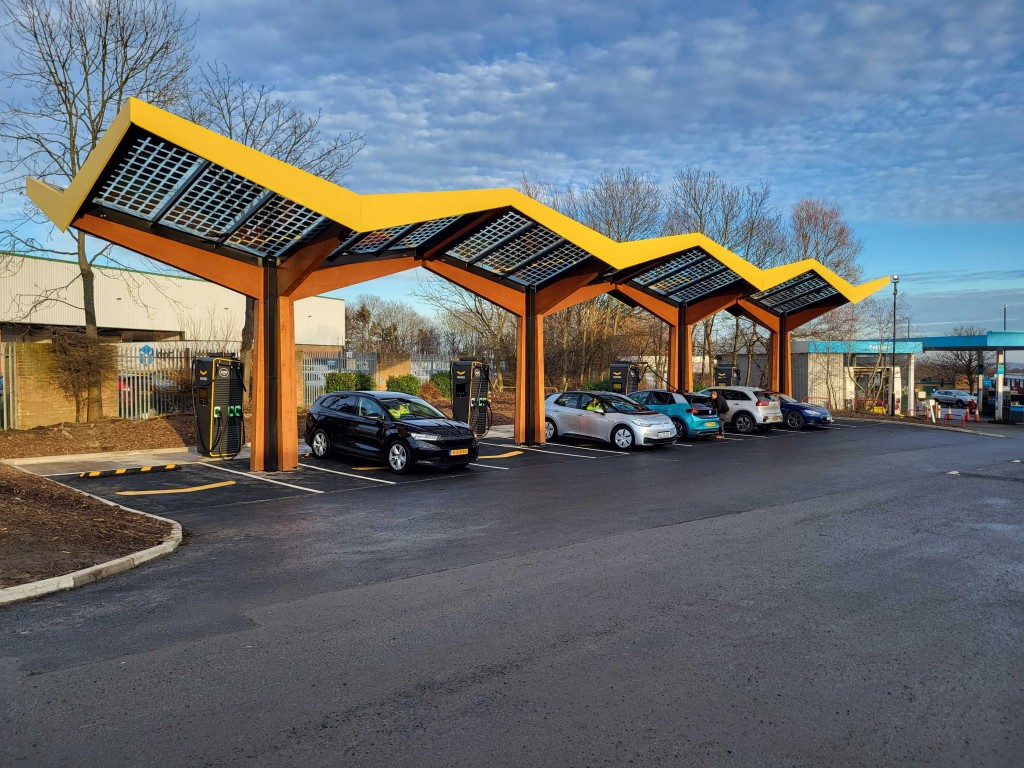
Are your sites profitable?
“I can't comment on the specific financials, but our infrastructure breaks even on an operational basis. Obviously a lot of our costs beyond that are around investment in infrastructure and development.
“The business can’t remain competitive if we don't keep growing, so that upfront investment is necessary. My hunch is that the UK needs roughly as many fast charging hubs as fuel stations - about 8000 - albeit in different locations in many instances.
“Today there are many thousands of chargers, but they are in various configurations and clusters; they are not really hubs, and improvements are coming quickly.
“As a whole, I’d estimate charge point operators have more than a billion pounds committed in investment. That’s a lot of charging capability - but alone, it still isn’t enough; we still need to get the grid connections and the planning permission through. A lot of our sites are stuck in some degree of purgatory, awaiting the approvals. It could be so much quicker.”
Is the criticism aimed at chargepoint operators unfair, then?
“To an extent I do feel we’re hard done by. But people have to understand the machinations of approvals take time. We are gagging to install more chargers, we have sites that are ready to go the moment the connections are approved, but we can’t move faster than the regulatory processes.”
Is it just about the connections, or are there issues securing the land too?
“The competition for land is acute, and it’s important to remember that chargepoint operators aren’t just competing with each other, but also with drive-through operators and the like.
“But it’s important to acknowledge that it’s not the amount of land available at an affordable price that is holding the investment up. It is the process of getting the connections.
“The biggest barrier we face almost always come from the way that the distribution network operators are set up. It’s not a very sexy subject, but the infrastructure and management of getting power from a big power station into a location just isn’t set-up for chargepoint operators. A big housing development might have similar needs, but having the transformer operational on a certain day isn’t critical when you are on a three-year schedule, so long as it’s operational when you open.
“We, in contrast, build around a three-month schedule, and can’t do anything until that connection is on; we literally can't sell a single kilowatt hour of electricity without it. That connection, and the legal arrangements associated with it, erode any value in a site until they are complete. In some cases the process is more complex than it needs to be. Some are pragmatic, but others are the polar opposite of pragmatic.”
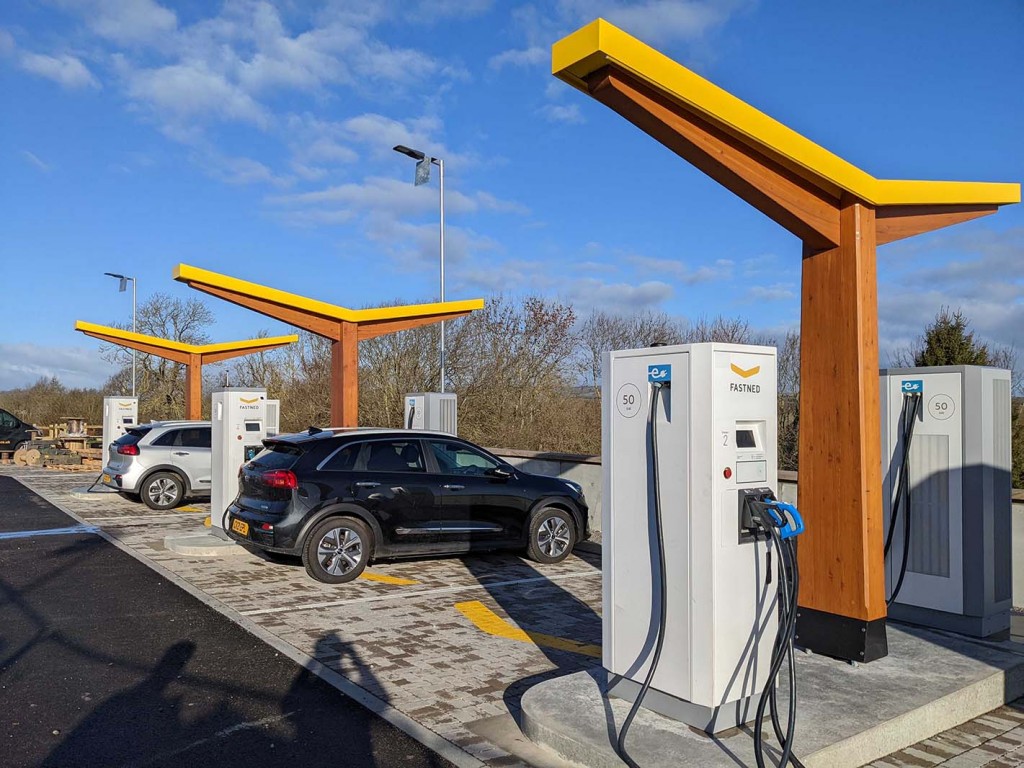
If connection processes can’t be sped up, what can you do?
“We try to operate sites that are scalable, so we try to put a big grid connection in from the start. We’ll then put in an appropriate amount of chargers for what we think is necessary today, but also the foundation pads so we can build the canopy and add more chargers as and when we think we need more scale. Essentially, we pre-plan for the future now, so that expansion should be exponentially easier.”
The design of your canopies is deliberately striking, but presumably expensive?
“Yes and yes. The idea of the solar canopies on our chargers are two fold: they provide a material amount of energy to charge cars - enough for about two full charges a day - but they also send a message that we are trying to do the best, most efficient job we can, using clean energy.
“What’s more, why shouldn’t you be able to stay dry when you charge your car, why shouldn’t you have lights? There is a cost to the canopies, but they are a key part of our brand and they provide a connection between us and our customers.”
Safety and accessibility have been in the news a lot, do your designs help?
“An accessible charging point results in improved experience for everybody - there's nothing that leads to worse experience, so we want to provide the best.
“We’re founding members of ChargeSafe, and have had all our sites ranked and rated against the latest standards. From bay widths to high kerbs to cable link weights and heights, we are thinking about these things and putting solutions in place.
Some of the latest cable solutions are amazing; so easy to move, even with impaired mobility.
“The biggest issue is convincing landlords of the value of accessible spaces. It’s a battle to say that the ten car parking spaces we want to takeover will only fit six chargers in, because we want to make them more accessible. That’s why we prefer to build on greenfield sites.
“The drive through layout is also a positive; it allows small trucks or cars and caravans to charge without unhitching, and it allows for sensible queuing to form if it’s necessary. The bigger point is that by building chargers, we’re learning - and the experience is improving all the time as a result.”
READ MORE
Subscribe to the Move Electric newsletter
e-CARS
Ten electric cars we're excited for in 2023
Getting an EV sideways: how easy is it to drift a Kia EV6 GT?
Q&A: Jaguar Racing's Sam Bird and Mitch Evans on Formula E's new era
e-BIKES
Ten electric bikes we're excited for in 2023
Can you get fit using an electric bike?
e-MOTORBIKES
Ten electric motorbikes we're excited for in 2023
Super Soco TC Max electric motorbike review
Cake and Polestar team up for new special edition Makka e-motorbike
e-SCOOTERS
Planned laws to legalise private e-scooters face delay
Five key takeaways from the rental e-scooter trials report
Which train firms have banned e-scooters from their services?
e-WORLD
Move Electric's best features of 2022: lap records, tuk-tuks… and sausage rolls
Volvo Trucks keeps on electric trucking with three new models

